#CDL training cost
Explore tagged Tumblr posts
Text
Kickstart Your Trucking Business: Financial Relief and Support Solutions
Renee Williams, PresidentFreightRevCon, a Freight Revenue Consultants, LLC. company The average cost to start a new trucking company ranges from $10,000 to $30,000, not including the cost of purchasing trucks and trailers. Here is a breakdown of the typical startup costs: Semi-truck and trailer down payment: $18,000 Insurance down payment: $4,000 USDOT number registration: $300 Business…

View On WordPress
#A/R automation for trucking#annual insurance premiums#business entity filing#CDL training cost#ELD monthly fees#electronic logging device cost#Freight#freight industry#Freight Revenue Consultants#heavy vehicle use tax#IRP plates cost#new trucking business setup#semi-truck down payment#start a trucking company#starting a freight company#trailer purchase cost#Transportation#truck factoring companies#truck financing#truck purchase cost#Trucking#trucking business startup costs#trucking capital requirements#trucking company expenses#trucking company line of credit#trucking equipment costs#trucking industry#trucking insurance costs#unified carrier registration cost#USDOT number registration
0 notes
Text
Understanding the Costs of Truck Driving School: What to Expect
Truck driving skills have become an important skill for jobs and careers, especially for those interested in safety and commercial driving. If you want to join a truck driving school in West Sacramento, it is very important for you to understand the costs so that you can plan accordingly.

What does the cost of a truck driving school include?
There are various factors involved in the cost of a truck driving school. Each school has slightly different requirements, but generally includes the following:
1. TUITION FEE
The biggest expense at a truck driving school is the tuition fee. This fee includes the necessary academic and practical training to enable you to drive. Rates in West Sacramento typically range from $3,000 to $10,000.
2. Equipped cover and equipment
Safety is imperative to driving a truck, so some schools provide safety equipment. This may include helmets, vests, driving gloves and other safety equipment.
3. LICENSE AND CERTIFICATION CHARGE
You must pass an exam to obtain a CDL license, which increases this. The costs of obtaining this license in West Sacramento can be around $300 to $500.
4. Fuel and Workshop Fees
During the practical training there are expenses for truck maintenance and fuel.
Factors affecting cost
Truck driving school costs depends on various factors.
Course Duration: Longer courses, such as 8-12 weeks of training, can be a bit expensive.
Training Model: If in 1-on-1 training, it may cost more.
Location: Inflation in areas like West Sacramento also affects costs.
Inexpensive options and support
By doing some research in advance, some schools or organizations are helpful in offering scholarships or loans.
The last word
If you want to make a career in truck driving, Deve Truck Driving School is the best choice for you. Our headquarters in West Sacramento, California offers the best machines and quality training with 1-on-1 focused CDL training.
#truck driving school costs#CDL school#truck driving lessons#CDL training Sacramento#Truck Driving School West Sacramento
0 notes
Text


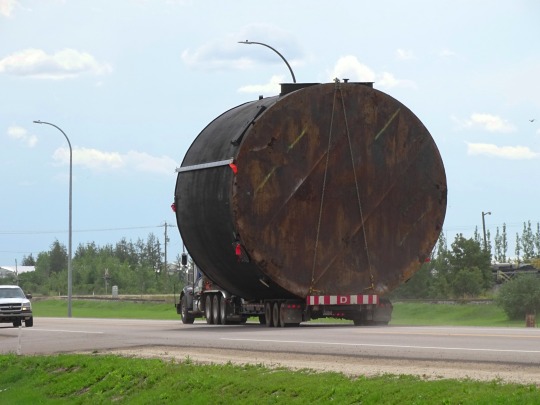

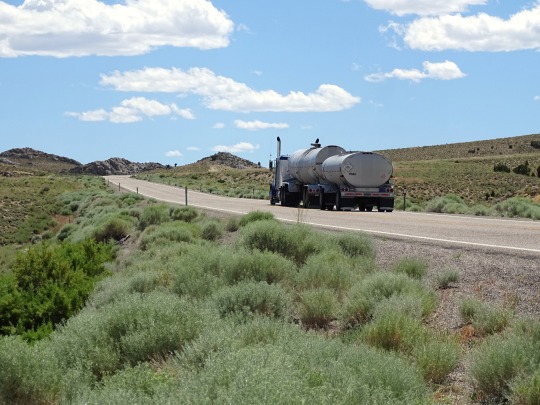
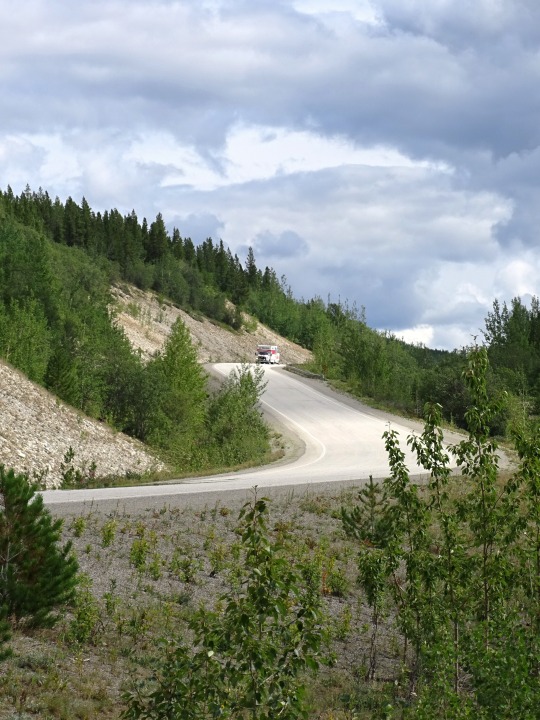

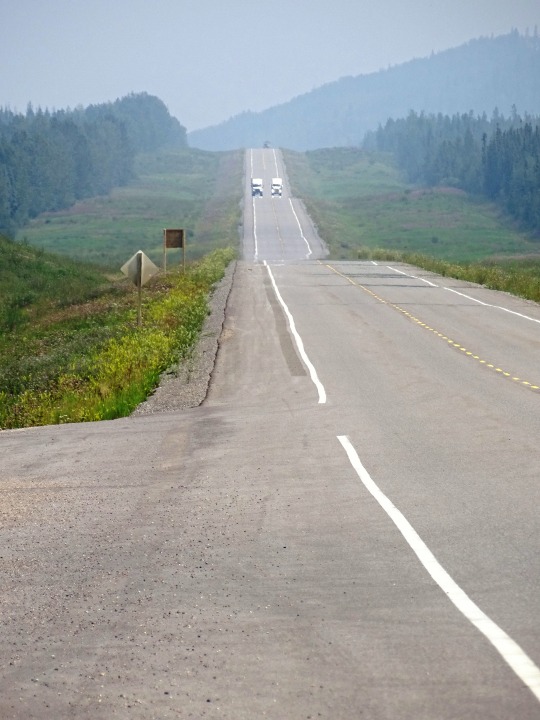
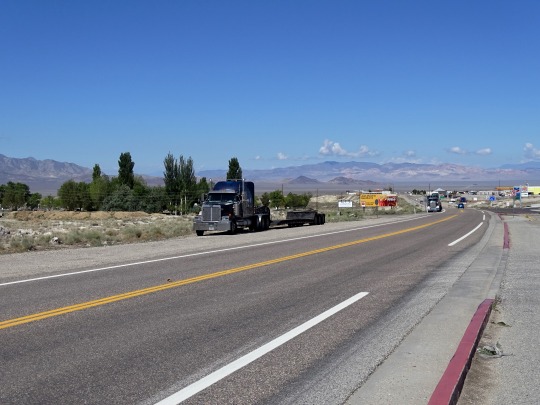



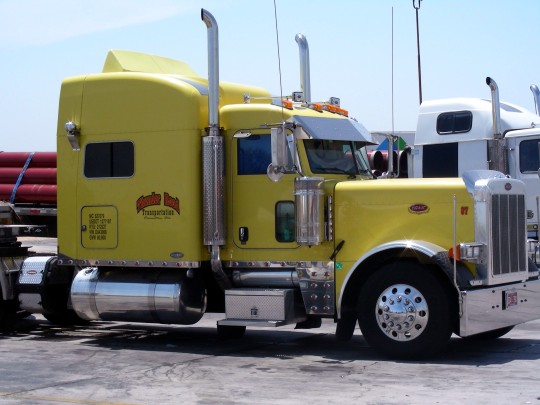

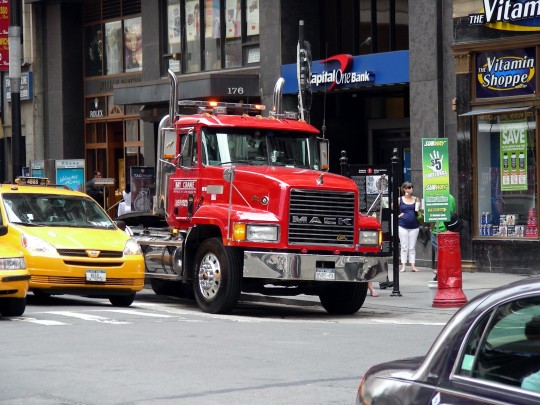


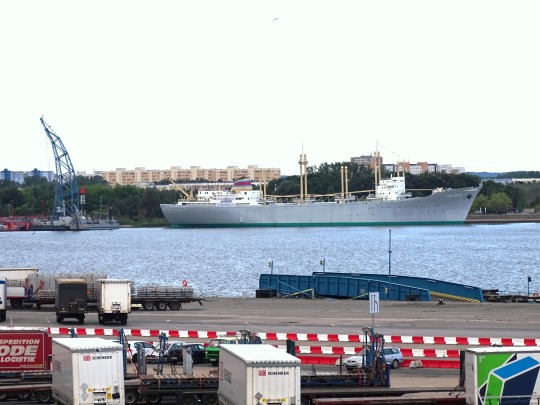
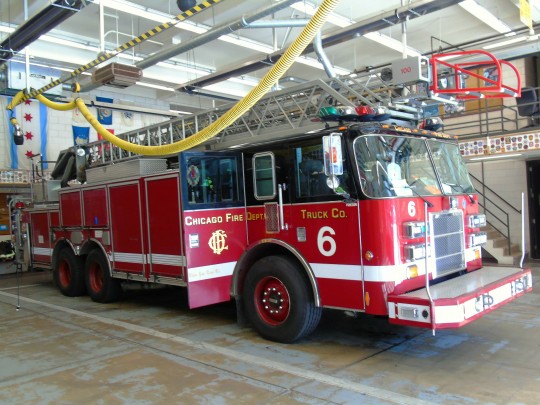
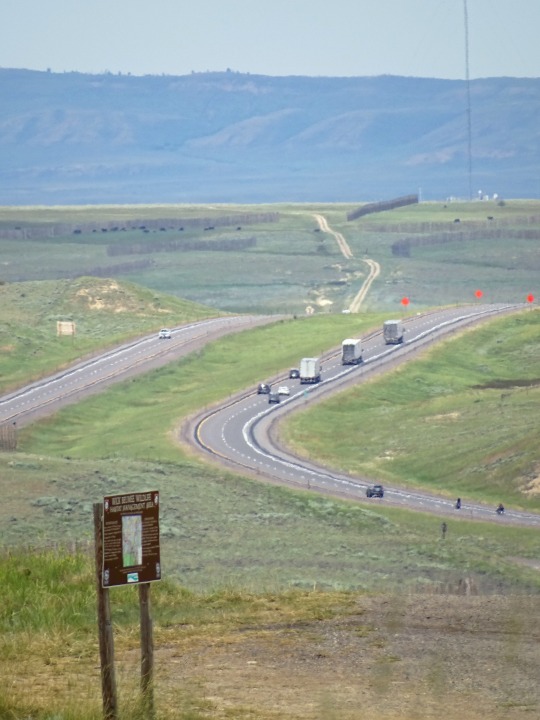
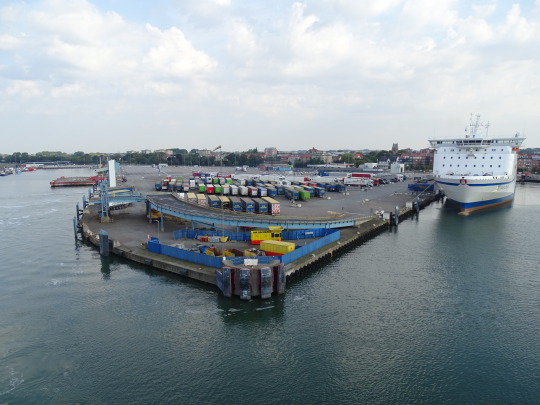








Truck Driver Day
Professional truck drivers are honored and celebrated today with Truck Driver Day. In the United States, a driver is considered to be a truck driver when their vehicle has a gross vehicle weight—the weight of the vehicle loaded—of at least 26,000 pounds. They must obtain a commercial driver's license (CDL) to drive a vehicle of this weight. Employers often require their drivers to take a safety training program, and some also require a high school degree or GED.
Truck drivers carry all kinds of freight—livestock, food, canned goods, liquids, packages, and vehicles—all across the United States and the world. They often have to load and unload their freight and must inspect their trucks before taking to the road. Truck drivers often ship products to stores, and some may have to undertake sales duties. Many truck drivers work long hours. Some may have daily local routes that keep them close to home, while others may have routes and schedules that often change, and many have to be away from home for an extended amount of time.
Some trucks were on the road in the United States prior to World War I. Trucks continued to be used and developed during the war, and by 1920 there were more than a million trucks on the roads of America. Trucking continued to expand over the following decade, on account of advancements such as the introduction of the diesel engine, improved rural roads, the introduction of power brakes and steering, and the standardization of truck and trailer sizes. In the 1930s, a number of trucking regulations were implemented, and the American Trucking Association was created. Trucking activity increased in the 1950s and '60s, in large part because of the creation of the Interstate Highway System. Regulations on the weight of trucks continued to be updated.
The heyday of the truck driver came in the 1960s and '70s. At the time, a wide swath of the public viewed truck drivers as modern-day cowboys or outlaws. The rise of "trucker culture" was signaled with the proliferation of trucker songs and films, the wearing of plaid shirts and trucker hats by the public, and the wide use of CB radios and CB slang. The romanticization of trucker culture subsided by the dawn of the 1980s.
Many truckers went on strike during the energy crises of 1973 and 1979, after the cost of fuel rose. The Motor Carrier Act of 1980 partially deregulated the industry. As a result, many new trucking companies were started. Trucker union membership also drastically declined, leading to lower pay. But the deregulation did reduce consumer costs, and it increased production and competition in the trucking industry. By the twenty-first century, trucking dominated the freight industry. In 2006, there were 26 million trucks on America's roads, which hauled about 70 percent of the country's freight. Truckers continue to play a prominent role in keeping the wheels of the economy turning, and for the hard work they put in to make this happen, they are honored and celebrated today!
How to Observe Truck Driver Day
Some ideas of ways the day could be spent include:
If you are a truck driver, get out there and drive! Or, take the day off. It should be up to you!
Wave to truckers or make a gesture like you are pulling a truck horn in an attempt to get them to honk their horns.
Thank a truck driver. Tell them thanks in person or make a social media post of thanks. Include the hashtag #TruckDriverDay.
Become a truck driver.
Listen to some truck driving songs such as "Convoy" and "Truck Drivin' Man."
Watch some truck driving films such as Smokey and the Bandit, Convoy, and Big Rig.
Talk on a CB radio.
Eat at a truck stop.
Attend or take part in the National Truck Driving Championships, which are held around the time as Truck Driver Day.
Read a book about trucking or truckers such as Trucking Country: The road to America's Wal-Mart Economy or The Long Haul: A Trucker's Tales of Life on the Road.
Explore the websites of organizations and companies related to the industry such as American Trucker, Truckers News, the Federal Motor Carrier Safety Administration, the American Trucking Associations, and the Women in Trucking Association.
#Hafen Rostock#MS Tom Swayer#Trelleborg Harbor#Alaska Highway#Yukon#British Columbia#Canada#Sweden#Germany#summer 2023#Truck Driver Day#TruckDriverDay#12 August#car#truck#streetscene#USA#original photography#I really love the first pic#Nevada#Manhattan#New York City#Sherman Summit#fire truck#Chicago#San Francisco#Echo Canyon#Utah#Wyoming#California
8 notes
·
View notes
Text
They have a rail in front of it that does the actual scraping precisely for that reason. But to be fair, the majority of the vehicles this happens to are box trucks and they just crumple like the aluminum cans they are (and would do the same thing if they hit the bridge first). It would be one thing if it were dump trucks or something similar that has the mass and structural integrity to do quite a lot of damage. But with all bridges like this, the local CDL holders tend to be pretty aware of the issue and know to take a different route - most of the issues are people who are moving or rented a box truck for some other reason and either don't have experience with that area at all or don't really process the fact that they're not in their civilian cars and the low height warning applies to them
P.S. it's a rail bridge, which is also why they can't really raise it more than they already did - trains can't handle very steep grades and it's probably cost prohibitive to completely rip out and rebuild the permanent way for several miles in each direction to get a lower grade. I think the height increase they already did was accomplished by digging out the road under the bridge a little deeper... unfortunately not deep enough. So the bridge's construction is probably much sturdier than your average automotive infrastructure, because the live load a vehicle puts on a roadway or bridge increases as a 4th power relationship to its mass - there is basically no vehicle on the road that weighs remotely as much as the average US locomotive much less a fully loaded train (a fully loaded 18 wheeler is about 40 tons; a typical locomotive is about 200 tons)
was reminded of that youtube channel that records footage of that bridge that scalps trucks today. one of the fascinating developments that's happened since i last heard about it is that, in one of their many attempts to stop the trucks from being can-opened, they installed a traffic light that detects when a vehicle that's over the allowed height is coming and turns red so the driver can stop and hopefully notice the signage all around that's screaming "YOUR VEHICLE IS OVERHEIGHT TURN AROUND" and avoid an accident. However as a result sometimes drivers see the light turning yellow and IMMEDIATELY start flooring it to avoid having to stop, ensuring that the roof of their truck just gets fucking annihilated instantly. Really beautiful stuff you should check it out
133K notes
·
View notes
Text
What is CDL Training? A Complete Guide for Beginners
If you're considering a career as a commercial truck driver, you've likely come across the term CDL training. But what exactly is it, and why is it so important? In this guide, we'll break down everything you need to know about CDL training, from what it entails to how you can get started with a trusted provider like CDL of America at Davie Travel Center.
What is a CDL?
A Commercial Driver's License (CDL) is a special license required to operate large vehicles like semi-trucks, buses, and certain construction vehicles. This license ensures that drivers have the skills and knowledge necessary to safely operate these heavy-duty vehicles on public roads.
There are three main classes of CDLs:
Class A – Allows you to operate combination vehicles with a gross vehicle weight rating (GVWR) of 26,001 lbs or more, including tractor-trailers and tanker trucks.
Class B – Covers single vehicles with a GVWR of 26,001 lbs or more, such as buses and delivery trucks.
Class C – Needed for vehicles that transport 16+ passengers or hazardous materials.
What is CDL Training?
CDL training is a structured program designed to prepare you for the CDL exam and teach you the practical skills needed to drive a commercial vehicle. A good training program will cover:
Classroom Instruction: Learn about road safety, federal regulations, and vehicle mechanics.
Hands-On Training: Get behind the wheel and practice real-world driving scenarios.
Pre-Trip Inspection: Understand how to check a truck’s safety before hitting the road.
Maneuvering Techniques: Master backing, turning, and parking large vehicles.
CDL Exam Preparation: Learn what to expect on the written and skills test.
Why is CDL Training Important?
Getting professional CDL training is the fastest and safest way to start a trucking career. Here’s why:
Better Job Opportunities – Many trucking companies require formal training from a reputable school.
Higher Pay – Trained drivers often earn more than those who try to get their CDL on their own.
Road Safety – CDL training ensures you and others stay safe while driving big rigs.
Hands-On Experience – You’ll get real-world practice before operating a truck alone.
How Long Does CDL Training Take?
The length of training varies by program, but most CDL training courses last between 3 to 8 weeks. Some schools offer accelerated programs, while others provide more extensive training for specialized driving skills.
How Much Does CDL Training Cost?
CDL training costs range from $3,000 to $8,000, depending on the school and program. However, many companies offer tuition reimbursement or sponsored training, allowing you to start your career with little to no upfront cost.
How to Choose the Best CDL Training School?
Not all CDL schools are created equal! When choosing a training provider, consider:
✅ Accreditation – Make sure the school is certified by the FMCSA (Federal Motor Carrier Safety Administration). ✅ Experienced Instructors – Look for schools with seasoned trucking professionals as trainers. ✅ Job Placement Assistance – Some schools partner with trucking companies to help you land a job after training. ✅ Flexible Schedules – If you have a busy lifestyle, check for part-time or evening classes. ✅ Modern Training Equipment – Training with newer trucks and technology gives you a better learning experience.
Why Choose CDL of America at Davie Travel Center?
If you're in Davie, Florida, and looking for the best CDL training, look no further than CDL of America at Davie Travel Center. They provide:
🚛 Top-Tier Training Programs – Their courses cover everything from basic driving to advanced techniques. 📜 FMCSA-Approved Training – Ensuring you get the best education and meet all legal requirements. 💼 Job Placement Assistance – Helping graduates secure trucking jobs right after certification. 💰 Affordable Tuition & Financial Aid – Various options to make training accessible to everyone. 🛣️ Real-World Driving Experience – Hands-on training with industry-standard trucks.
Get Started Today!
A career in trucking can be rewarding, flexible, and financially stable. If you're ready to take the first step, enroll in CDL training at CDL of America in Davie Travel Center today.
0 notes
Text
Why Linemen Academy is the Best Place to Launch Your Career

Starting as an electrical lineman requires a serious step, and the right place to start makes all the difference. If you’re looking to land the best opportunities, hands-on training, and high job demand, then Linemen Academy is the best place for you. Whether you’re looking for a CDL Driver Apprenticeship Program, training on how to become an electrical lineman, or looking for the appropriate linemen apprentice Ohio program, this Academy has it all. Let’s take a closer look at why linemen academy is the ideal location to begin your career.
Strong Demand for Electrical Linemen in Ohio:
Linemen’s demand for more skilled electrical workers is growing because of expanding cities and aging infrastructure. Utility companies call in trained professionals to maintain and repair power lines when cities keep expanding and when extreme weather and storms hit. If you’re looking for a safe, rewarding career, Linemen Academy offers plenty of opportunities.
Top-Quality Training Programs:
If you want to be a lineman, you’ll need hands-on training and the right certifications. Linemen Academy has some of the best training programs in the nation. These programs put a lot of weight on real-world experience getting you ready for the job’s tough parts. A lot of programs also teach you how to become a CDL Driver Apprentice, which linemen must have. With good schooling and practical know-how, you’ll be set to start work before you know it.
Competitive Salaries and Benefits:
Good money is paid in the state of Ohio, thus an excellent destination to start your career and when growing it. Entry-level apprentices earn a strong wage during their time learning on the job while much greater wages can be earned by experienced linemen. Most companies also provide good benefits, including medical, retirement, and paid time off. Linemen Academy offers financial security at any level in their careers.
Apprenticeship Opportunities for Hands-On Learning:
One of the best ways to start your career is through an apprenticeship program. Linemen Academy offers many linemen apprentice opportunities that provide hands-on training under experienced professionals. These programs allow you to earn while you learn, making it easier to gain experience without worrying about tuition costs. Plus, apprenticeships often lead to full-time positions with great companies.
CDL Training to Boost Your Career:
Starting your career through an apprenticeship program is one of the best options available. In Linemen Academy, there are numerous linemen apprenticeship opportunities that offer practical training alongside seasoned professionals. These programs enable you to earn money while you learn, alleviating concerns about tuition expenses. Additionally, apprenticeships frequently result in full-time job offers from reputable companies.
Supportive Community and Networking Opportunities:
In the world of electrical linemen, holding a Commercial Driver’s License (CDL) is essential for handling utility trucks and heavy equipment. Linemen Academy offers specialized training programs such as the CDL Driver Apprenticeship Program to assist individuals in fulfilling this prerequisite. Possessing a CDL not only enhances your worth in the eyes of employers but also broadens your scope of employment prospects. Moreover, Also provides high-quality CDL training opportunities, paving the way for career progression with greater ease.
Career Growth and Advancement:
When you have completed your apprenticeship and training, Linemen Academy offers many opportunities to grow in a career. Many of the linemen begin as an apprentice and rise through the ranks into journeyman or supervisor positions. Some even work their way up into teaching or safety positions. The job market and demand for linemen in Ohio always make room for further growth.
Linemen Academy is a great place to start if you’re considering a career as an electrical lineman. You’ll have all you need to launch a successful professional life, including high job demand, excellent training programs, apprenticeship choices, and attractive wages. Also provides the best path ahead, whatever your preference for a lineman apprenticeship or a CDL Driver Apprenticeship Program.
#CDL Driver Apprenticeship Program#Becoming an Electrical Linemen#Electric Linemen Apprenticeship Program
0 notes
Text
The Road to Success: Essential Truck Driver Training Tips for Beginners
Becoming a professional truck driver is an exciting journey. It offers good pay, stability, and a sense of independence on the open road. However, like any rewarding career, success in truck driving starts with proper training. Truck driver training is essential for building the skills, knowledge, and confidence necessary to drive safely and efficiently. Whether you're just starting or considering a career change, this guide will walk you through some essential truck driver training tips for beginners.
Choose the Right Truck Driver Training Program
Choosing a program that suits your needs is the first step in your truck driver training journey. The quality of the training program you select might significantly impact your career as a truck driver because not all programs are made equal. Take into account the following when searching for a truck driver training program:
Accreditation: Look for programs accredited by your region's Department of Transportation (DOT) or similar regulatory agencies.
Duration and Costs: Compare the length and cost of various programs. Some might be shorter but more intensive, while others may provide a more flexible schedule.
Instructor Experience: Ensure the instructors have substantial industry experience and the qualifications to teach effectively.
Facilities and Equipment: Check that the school has up-to-date trucks, simulators, and other necessary equipment for training.
Choosing the right truck driver training program will provide you with the foundational knowledge and skills to succeed in this demanding career.
Master the Basics of Trucking
Mastering the fundamentals of truck driving is essential before understanding more complicated driving techniques and traffic laws. This entails being aware of a truck's mechanics, parts, and operation.
Start by becoming acquainted with the truck's controls, including the air system, braking system, and gearbox. Additionally, you should know the significance of pre-trip inspections, which help guarantee the vehicle is roadworthy before departure.
Additionally, concentrate on the fundamental driving skills needed to operate a massive vehicle. The secret is practice and patience, even though it may initially seem overwhelming. As your confidence grows, driving will come naturally to you.
Focus on Road Safety and Regulations
Driving a truck necessitates a thorough awareness of traffic laws, road safety, and rules unique to commercial vehicles. Federal and state laws like the Hours of Service (HOS) requirements are essential for long-distance drivers to stay safe and attentive.
Your training will also heavily emphasize defensive driving strategies, lane positioning, and a thorough comprehension of traffic indicators. Safety instruction is a common component of truck driving schools' curricula, but it's always a good idea to go beyond the fundamentals and thoroughly review these rules. This knowledge will make you a more responsible and trustworthy driver and help you avoid accidents.
Get Hands-On Experience with Truck Driving
Truck driving is a practical talent, even though theoretical understanding is essential. Practical driving experience is one of the most crucial components of truck driver training. Before moving on to highway driving, many novice drivers begin training in a controlled setting to learn how to operate the truck in low-traffic zones.
Make sure you practice a lot on different roads and in other situations. You will be better prepared for the obstacles you may encounter on the job if you drive in urban traffic, on highways, and in various weather situations. Learning how to park, reverse, and navigate tight spaces is essential. Remember that you will grow more efficiently and skilled the more time you spend behind the wheel.
Prepare for the CDL Test
Once you've completed your truck driver training, it's time to prepare for the Commercial Driver's License (CDL) test required in most regions to become a professional truck driver. This test typically consists of both a written exam and a driving test.
For the written exam, you'll need to study topics like road signs, safety procedures, vehicle inspection, and more. Your training program should prepare you for these questions, but it's essential to dedicate extra time to review the material and take practice tests.
The driving test will evaluate your ability to operate the truck safely and effectively. You'll be asked to demonstrate skills such as making wide turns, backing up, parking, and adhering to traffic laws. Passing the CDL test is essential for launching your career as a truck driver.
Understand the Importance of a Healthy Lifestyle
Being a truck driver can be physically demanding. Long hours of sitting, irregular sleep schedules, and poor eating habits can damage your body. Maintaining a healthy lifestyle is essential to performing well in training and throughout your career.
Exercise regularly to improve endurance and flexibility. Pay attention to your diet and ensure that you're eating nutritious meals to stay alert on the road. Avoid excessive caffeine or unhealthy snacks that can lead to energy crashes. Prioritize sleep and rest to stay focused and reduce the risk of fatigue, one of the leading causes of accidents in the trucking industry.
Build a Strong Work Ethic
Truck driving is a career that requires discipline, responsibility, and a strong work ethic. Your ability to stick to schedules, follow instructions, and complete tasks on time will directly influence your success. Whether hauling freight across the state or managing deliveries within your local area, being reliable and punctual is crucial.
In addition to these core qualities, developing excellent communication skills is essential. You'll often need to interact with dispatchers, fellow drivers, and clients, so clear and professional communication will help foster a positive working relationship.
Never Stop Learning
Even after completing your truck driver training and passing the CDL test, the learning process doesn't end. The trucking industry constantly evolves with new technology, regulations, and best practices. Keep up with the latest trends and continuously improve your driving skills.
Consider attending workshops, taking advanced driving courses, or becoming certified in hazardous materials transportation or freight hauling. These additional qualifications can help you stand out in a competitive job market and open up new opportunities for career growth.
Conclusion
The road to becoming a successful truck driver may be long, but with the proper training, dedication, and perseverance, you can set yourself up for a rewarding career. By selecting the right truck driver training program, mastering essential skills, understanding road safety regulations, and maintaining a healthy lifestyle, you will be well-equipped for the challenges ahead.
Take your time during training, be patient, and remember that every mile you drive is a step closer to achieving your career goals. If you have any questions or need assistance, please contact us. Good luck, and happy driving!
0 notes
Text
Navigating the Path to CDL Success: Tips and Resources for Aspiring Drivers
The trucking industry plays a vital role in the U.S. economy, transporting goods across vast distances to keep businesses running smoothly. If you’ve ever considered entering this field, obtaining a Commercial Driver’s License (CDL) is the first step toward an exciting and stable career. However, the process of becoming a commercial driver involves several steps, including thorough training, testing, and sometimes, ongoing education.
Here's a guide to walk you through the essential steps and offer valuable tips and resources to help you navigate the path to CDL success.
1. Understand the CDL Requirements
Before embarking on your CDL journey, it's important to familiarize yourself with the requirements specific to your state and the class of CDL you're pursuing. There are three primary classes of CDL in the U.S.: Class A, Class B, and Class C. Each class corresponds to the type of vehicle you'll be operating.
Class A: For combination vehicles with a gross combined weight rating (GCWR) of 26,001 lbs or more, including vehicles that tow a trailer over 10,000 lbs. This is the most common CDL for long-haul trucking.
Class B: For single vehicles weighing 26,001 lbs or more, or towing a trailer under 10,000 lbs.
Class C: For smaller vehicles that carry 16 or more passengers or hazardous materials.
2. Choose the Right CDL Training Program
One of the most important decisions you’ll make on your path to obtaining a CDL is selecting the right training program. A good CDL training program provides the foundational knowledge and hands-on skills you'll need to succeed.
Florida, for example, offers a wide range of options for aspiring truck drivers. You can find training in cities like Fort Myers, Clewiston, and Cape Coral, where reputable CDL training facilities provide both classroom and behind-the-wheel instruction.
Here are some things to consider when choosing a training program:
Accreditation: Make sure that the program is accredited and meets the requirements set by the Department of Transportation (DOT) and state regulations. Accredited programs ensure that you receive proper training that will be recognized by employers.
Curriculum: A solid training program should cover both the theoretical and practical aspects of driving. You’ll need to learn about road safety, vehicle operation, and regulations, as well as hands-on driving skills. Many CDL training companies in Fort Myers offer both classroom instruction and in-vehicle training to give you a well-rounded education.
Location: Look for programs that fit your schedule and are conveniently located. Many training companies offer weekend classes, which is especially useful for those with other obligations.
Cost: Be sure to research the cost of the program and explore financing options. Some employers may offer private financing or even tuition reimbursement once you’re hired, so inquire about potential job placements after graduation.
3. Prepare for the CDL Permit Test
Once you’ve enrolled in a CDL training program, your next task is passing the CDL permit test. This test evaluates your knowledge of road signs, traffic laws, and safe driving practices. While it may seem intimidating, there are plenty of resources available to help you succeed. Many CDL training providers in Florida offer test preparation, including practice exams and study guides.
Here are some additional tips for preparing for the permit test:
Study the CDL manual: The manual provides all the information you need to know for the test. Spend time reading through it and make notes of the key topics.
Take practice tests: Use online resources or take advantage of practice exams offered by your CDL training facility to test your knowledge.
Study with a partner: If possible, study with a fellow student or a CDL coach who can help quiz you and reinforce important concepts.
4. Get Hands-On Experience
While classroom instruction is important, real-world driving experience is what will truly prepare you to operate a commercial vehicle. Many CDL training companies in Fort Myers offer behind-the-wheel training with experienced instructors who will guide you through the process.
Here are some things to keep in mind during your hands-on training:
Listen to your instructors: Experienced trainers will guide you through driving drills and real-time problem-solving. Pay attention to their advice on maneuvering large vehicles, especially when it comes to backing up, turning, and parking.
Practice frequently: The more time you spend behind the wheel, the more comfortable and proficient you’ll become. Be sure to make the most of every driving session.
Ask questions: Don’t hesitate to ask your instructor for clarification if you don’t understand something. Whether it's about the Class A CDL or CDL B classes in Florida, make sure you’re confident before taking the test.
5. Pass the Road Test
The road test is the final step before obtaining your CDL. During the test, you'll be required to demonstrate your ability to safely operate a commercial vehicle. This includes performing basic maneuvers like parking, turning, and backing up, as well as demonstrating your knowledge of the vehicle and its safety equipment.
To prepare for your road test:
Rehearse common maneuvers: Spend plenty of time practicing parking, turning, and backing up with your instructor or a CDL coach.
Check your vehicle: Before the test, inspect your vehicle for any issues. A pre-trip inspection is a key component of the road test, so make sure everything is in working order.
Stay calm: Nerves are natural, but focus on staying calm and composed. If you make a mistake, don’t panic. Keep your focus on completing the test safely and correctly.
6. Explore Career Opportunities
Once you’ve obtained your CDL, the next step is to start your career. The trucking industry offers a variety of job opportunities, ranging from local deliveries to long-haul trucking. Some drivers choose to work for large companies, while others opt for independent contracting. If you want to take your skills to the next level, consider hiring a CDL personal trainer to enhance your skills and prepare for more advanced roles.
Start Your CDL Journey with SunState CDL
Ready to start your CDL journey? SunState CDL offers expert CDL training and coaching in Florida with experienced instructors and hands-on practice to help you succeed. Whether you’re pursuing a Class A, or Class B, they provide flexible schedules and the resources you need to launch a successful trucking career. Contact them today!
About the Author
John Doe is an experienced transportation professional with over 10 years in the trucking industry. He is passionate about helping aspiring drivers achieve success through quality CDL training and education.
0 notes
Text
How Corporate Training on Gen AI Can Help Future-Proof Your Business

In today’s competitive business environment, staying relevant means investing in your workforce. Corporate training on Gen AI (Generative AI), combined with Leadership Training, Upskilling, Reskilling, and building Professional Skills, is essential to help businesses adapt and thrive. Programs like short-duration corporate programs and Corporate Learning Programs provide targeted solutions to prepare employees for the AI-driven future.
Let’s explore why corporate training on Gen AI is a must and how it can transform your business.
What is Generative AI, and Why Does it Matter?
Generative AI is a technology that creates content, analyzes data, and performs tasks that typically require human creativity. It is revolutionizing industries like marketing, healthcare, and manufacturing.
Real-World Applications:
Automates repetitive tasks like data entry and reporting.
Generates creative content for marketing and branding.
Offers predictive insights for better decision-making.
Why Businesses Need It: Generative AI can save time, reduce costs, and improve efficiency, but employees need proper training to leverage it effectively.
Benefits of Corporate Training on Gen AI
Improved Productivity: Employees learn to use AI tools to streamline workflows, freeing time for strategic tasks.
Enhanced Innovation: Teams can use AI to solve problems creatively and develop new ideas.
Better Decision-Making: Training helps employees understand AI-generated insights, leading to more informed decisions.
The Role of Leadership Training in an AI-Driven World
Leadership training is vital to help managers and leaders embrace AI and guide their teams effectively.
AI-Powered Decision Making: Leaders learn how to interpret data insights and use them for strategic planning.
Integrating AI in Business Processes: Training ensures leaders can successfully adopt AI in everyday operations.
Managing Change: Helps leaders navigate organizational changes and ease employee transitions to AI-driven workflows.
Upskilling and Reskilling: Preparing for the Future
As AI transforms job roles, businesses need to focus on upskilling and reskilling their workforce.
Upskilling:
Adds new skills like AI ethics, prompt engineering, and tool management.
Keeps employees current in their roles as AI technology evolves.
Reskilling:
Prepares employees for entirely new job roles created by AI innovations.
Reduces the need for external hiring, saving costs.
Why Choose Short Duration Corporate Programs?
Short-duration programs are perfect for busy professionals who need practical skills quickly.
Efficient Learning: Focused training ensures employees gain key skills in a short time without disrupting their work.
Customizable Content: Programs can be tailored to specific industry challenges, making them highly relevant.
Immediate Impact: Employees can apply what they learn immediately, improving productivity and performance.
Key Advantages of Corporate Learning Programs
Corporate learning programs offer a structured approach to workforce development.
Tailored Training: Programs like Leadership Training and Corporate Training on Gen AI are designed to meet business needs.
Cost-Effective Solutions: Investing in training reduces turnover costs by retaining and empowering employees.
Future-Ready Workforce: An AI-trained team gives businesses a competitive edge in today’s market.
Conclusion
Corporate training on Gen AI is not just a trend—it’s necessary for businesses aiming to stay ahead. Combining AI training with leadership development, upskilling and reskilling, and professional skills enhancement ensures the workforce is ready to embrace the future.
Invest in Short Duration Corporate Programs and Corporate Learning Programs today to equip your team with the skills they need to succeed in the AI-driven world. With IMT CDL’s expertise, you can future-proof your business and thrive in an ever-evolving market.
0 notes
Text
Understanding the Challenges and Rewards of Car Hauling
Car hauling is a specialized sector within the transportation industry that involves transporting cars between locations using specialized trailers. This niche is critical for automotive manufacturers, dealerships, and even individual car owners who need vehicles moved safely and efficiently. While car hauling can be lucrative, it also comes with unique challenges that require careful management and strategic planning.
The Basics of Car Hauling
Car hauling is more than just driving a truck; it requires using an auto transporter, commonly known as a car haulier, a type of trailer or semi-trailer designed to transport vehicles. Depending on the design, these trailers can carry anywhere from one to twelve vehicles. Car hauliers are typically categorized into two types: open and enclosed. Open carriers are the most common and cost-effective option, exposing the vehicles to the elements but allowing more cars to be transported simultaneously. Enclosed carriers offer protection from weather and road debris but at a higher cost and reduced capacity.
Licensing and Regulations
One of the first challenges in car hauling is dealing with the extensive licensing and regulatory requirements. Car hauliers must comply with federal and state regulations, which can vary significantly from one jurisdiction to another. Operators need to obtain the proper commercial driver's license (CDL), usually with specific endorsements that allow for the hauling of oversized loads. Additionally, there are stringent regulations on vehicle weight, dimensions, and safety standards that must be adhered to strictly to avoid fines and ensure road safety.
Logistics and Coordination
Effective logistics management is crucial in car hauling. Scheduling pickups and deliveries involves precise timing to avoid delays and maximize efficiency. Hauliers must plan routes carefully, considering factors like road restrictions for heavy vehicles, potential traffic jams, and the most cost-effective paths. Coordinating with car dealerships, manufacturers, and individual clients is also critical to ensure that vehicle transfers align with their expectations and business needs.
Safety Concerns
Safety is a paramount concern in car hauling. The loading and unloading process is inherently risky and requires specific skills and equipment. Drivers must be trained in safe loading techniques to prevent vehicle damage and ensure that they are securely fastened during transport. On the road, fully loaded carriers' high centre of gravity makes them susceptible to rollovers if not handled correctly. Regular maintenance of hauling equipment, including hydraulics, ramps, and straps, is essential to minimize the risk of accidents.
Market Fluctuations and Economic Impact
The car hauling business is sensitive to economic changes. Fluctuations in the automotive industry, including the rise and fall of car sales, directly affect the demand for hauling services. Economic downturns can lead to reduced job security, while booms in the auto industry can result in increased opportunities and heightened competition. Understanding market trends and adjusting business strategies accordingly is vital for success.
Environmental Considerations
Environmental issues also present a challenge for car hauliers. Heavy vehicles significantly contribute to carbon emissions, and the transport sector is under increasing pressure to reduce its ecological footprint. Implementing more fuel-efficient transport methods, such as using newer, more efficient trucks or adopting alternative fuels, can help mitigate these impacts. Moreover, compliance with environmental regulations is becoming more stringent, requiring hauliers to invest in cleaner technology and practices.
Customer Service and Damage Control
High-quality customer service is essential in maintaining a good reputation in the car hauling industry. Transporters must ensure that cars arrive in the condition in which they were received. Damage to vehicles can lead to significant financial liabilities and loss of business. Effective communication with clients about their service expectations and immediate reporting and handling of any issues during transit are critical components of successful car hauling operations.
The Rewards of Car Hauling
Despite these challenges, car hauling can be highly rewarding. It offers the potential for lucrative earnings, especially for those who successfully navigate the industry's complexities. The growth in online car sales and national dealerships has expanded the market for car hauliers. There is also a strong sense of accomplishment in safely delivering valuable cargo and contributing to other businesses' success.
Car hauling is a complex but rewarding industry that plays a crucial role in the automotive supply chain. It requires a significant commitment to safety, regulatory compliance, and customer service. For those who can effectively manage the challenges, car hauling offers a robust career with the potential for growth and significant financial rewards. As the automotive industry continues to evolve, so will the opportunities and demands in car hauling, making it a dynamic and exciting field for the foreseeable future.
0 notes
Text
Commonly Overlooked Deductions For Truck Drivers
When it comes to trucking tax preparation, truck drivers often face unique challenges and opportunities. Many are aware of standard deductions, such as fuel and maintenance costs, but several commonly overlooked deductions can significantly impact tax returns. Understanding these deductions can lead to substantial savings for truck drivers, whether they are owner-operators or employees.
Here are some commonly overlooked deductions to consider:
Per Diem Allowances
Truck drivers frequently spend extended periods on the road, leading to additional meal and lodging expenses. The IRS allows drivers to deduct a per diem for meals while traveling for business. Instead of keeping every meal receipt, drivers can opt for the per diem rates, which vary based on location. In 2024, the federal per diem rate is set at $69 for meals and incidentals. This deduction can simplify the process and often results in a higher deduction compared to actual meal expenses.
Vehicle Depreciation
For owner-operators, the depreciation of their trucks is a significant deduction that is often overlooked. Truck drivers can deduct a portion of the truck’s cost each year based on its useful life. There are two methods to consider: the standard depreciation method and Section 179 expensing, which allows drivers to deduct the full purchase price of qualifying equipment, up to a limit, in the first year. Understanding the best method for your situation can maximize savings.
Interest on Vehicle Loans
If a truck driver has financed their vehicle, the interest paid on the loan can also be deducted. This deduction can add up over the years, especially for owner-operators with high loan balances. It’s crucial to keep track of interest payments throughout the year to ensure this deduction is claimed.
Travel Expenses
Beyond meals and lodging, other travel-related expenses can be deducted. This includes costs associated with truck parking, tolls, and even the expense of a hotel if required. Maintaining thorough records of all travel-related expenses ensures drivers don’t miss out on these valuable deductions.
Personal Protective Equipment (PPE)
Safety is paramount in the trucking industry, and expenses related to personal protective equipment are deductible. This includes items like safety boots, gloves, hard hats, and high-visibility clothing. As these items are necessary for work, they qualify as legitimate business expenses.
Licensing and Training Fees
Truck drivers are required to maintain specific licenses and undergo training to stay compliant with regulations. The costs associated with renewing commercial driver’s licenses (CDLs), obtaining endorsements, and completing mandatory training courses can be deducted. These expenses are directly tied to maintaining employment and should not be overlooked.
Cell Phone and Communication Expenses
In today’s digital world, effective communication is essential. Truck drivers can deduct expenses related to their cell phones and internet service if used for business purposes. Keeping a detailed log of business-related calls and data usage can help justify these deductions.
Tax Preparation Fees
The costs incurred for tax preparation services are deductible as well. Whether hiring a tax professional or using tax software, these expenses can reduce taxable income and should be included in the deductions claimed.
Health Insurance Premiums
For owner-operators, health insurance premiums can be a significant expense. Fortunately, sWhen it comes to trucking tax preparation, truck drivers often face unique challenges and opportunities. Many are aware of standard deductions, such as fuel and maintenance costs, but several commonly overlooked deductions can significantly impact tax returns.
Conclusion
Truck drivers have a unique set of expenses, and understanding commonly overlooked deductions can lead to significant tax savings. Keeping detailed records, maintaining receipts, and working with a tax professional knowledgeable about trucking industry specifics can help ensure that all eligible deductions are claimed. By taking advantage of these often-missed deductions, truck drivers can maximize their tax returns and enhance their overall financial health.
0 notes
Text
What to Expect When Attending a Commercial Truck Driving School
Truck driving is a profession that can be challenging and rewarding; however, to be successful, you need the correct training first. If you plan on enrolling yourself in a commercial driving school in Sacramento, then it's very important for you to know what the whole process of learning from start to finish should look like. A respectable truck driving school will ensure that as soon as you start out on your career, everything is simple and secure, and it will teach all the necessary skills so that one day soon after being given a truck driver's licence, it only takes time before becoming familiar with being an experienced professional driver.

The right balance of theoretical and practical training
When you enrol in a commercial driving school, you'll be given theoretical and practical training. During theoretical training, you are taught various rules, safety measures and laws regarding truck driving. In addition, during practical training, you will be allowed to drive a real truck at last. Sacramento's truck driving schools enable their students to excel at both of these major aspects studied together.
Special focus on safety rules
Safety is a core judgement of truck driving! To be safe in school, you will learn the skills necessary to be safe for yourself and others. Through teachers so professional and so patient, Sacramento's commercial driving school will help you understand from the get-go what all the pitfalls are out on the road. You will be given a thorough understanding of road rules and how to handle different situations you may encounter when driving.
Training with advanced equipment and vehicles
Some of Sacramento's best commercial driving schools train students using advanced equipment. With modern equipment like this, you can experience real-time driving and also get familiar with the latest technology. Not only will your driving ability improve, but you'll also be prepared for any challenges that are thrown at you in the real world.
Experienced and Professional Instructors
A good truck driving school is one in which the instructors are not only qualified to teach you but can also influence and guide you. Sacramento's commercial driving schools will provide you with skilled instructors who will not only help with the technical aspects of driving but impart confidence as well.
Employment Opportunities and Career Guidance
An important part of the picture is that many commercial driving schools provide employment placement services so their students can find jobs.
Conclusion
Enrolling at a commercial driving school is the start of your truck driving career in Sacramento, and this may be vital. Here you get theoretical and practical training, knowledge of safety rules from professionals, and cross-country equipment training with top-of-the-line machinery. Find a school that will take good care of you and meet your requirements.
Ready to hit the open road as a professional truck driver? Dave Truck Driving School in West Sacramento is your fast track to success. Our personalized 1-on-1 CDL training ensures you get the attention you deserve. Learn on top-of-the-line equipment and gain the skills employers demand. Don't settle for less – choose the leading truck driving school in the region. Your new career is just around the corner!
#Truck Driving School West Sacramento#truck driving lessons#CDL training Sacramento#commercial driving license in West Sacramento#truck driving courses in West Sacramento#Affordable truck driving school#best truck driving school near me#truck driving school costs#CDL school
0 notes
Photo










Truck Driver Day
Professional truck drivers are honored and celebrated today with Truck Driver Day. In the United States, a driver is considered to be a truck driver when their vehicle has a gross vehicle weight—the weight of the vehicle loaded—of at least 26,000 pounds. They must obtain a commercial driver's license (CDL) to drive a vehicle of this weight. Employers often require their drivers to take a safety training program, and some also require a high school degree or GED.
Truck drivers carry all kinds of freight—livestock, food, canned goods, liquids, packages, and vehicles—all across the United States and the world. They often have to load and unload their freight and must inspect their trucks before taking to the road. Truck drivers often ship products to stores, and some may have to undertake sales duties. Many truck drivers work long hours. Some may have daily local routes that keep them close to home, while others may have routes and schedules that often change, and many have to be away from home for an extended amount of time.
Some trucks were on the road in the United States prior to World War I. Trucks continued to be used and developed during the war, and by 1920 there were more than a million trucks on the roads of America. Trucking continued to expand over the following decade, on account of advancements such as the introduction of the diesel engine, improved rural roads, the introduction of power brakes and steering, and the standardization of truck and trailer sizes. In the 1930s, a number of trucking regulations were implemented, and the American Trucking Association was created. Trucking activity increased in the 1950s and '60s, in large part because of the creation of the Interstate Highway System. Regulations on the weight of trucks continued to be updated.
The heyday of the truck driver came in the 1960s and '70s. At the time, a wide swath of the public viewed truck drivers as modern-day cowboys or outlaws. The rise of "trucker culture" was signaled with the proliferation of trucker songs and films, the wearing of plaid shirts and trucker hats by the public, and the wide use of CB radios and CB slang. The romanticization of trucker culture subsided by the dawn of the 1980s.
Many truckers went on strike during the energy crises of 1973 and 1979, after the cost of fuel rose. The Motor Carrier Act of 1980 partially deregulated the industry. As a result, many new trucking companies were started. Trucker union membership also drastically declined, leading to lower pay. But the deregulation did reduce consumer costs, and it increased production and competition in the trucking industry. By the twenty-first century, trucking dominated the freight industry. In 2006, there were 26 million trucks on America's roads, which hauled about 70 percent of the country's freight. Truckers continue to play a prominent role in keeping the wheels of the economy turning, and for the hard work they put in to make this happen, they are honored and celebrated today!
How to Observe Truck Driver Day
Some ideas of ways the day could be spent include:
If you are a truck driver, get out there and drive! Or, take the day off. It should be up to you!
Wave to truckers or make a gesture like you are pulling a truck horn in an attempt to get them to honk their horns.
Thank a truck driver. Tell them thanks in person or make a social media post of thanks. Include the hashtag #TruckDriverDay.
Become a truck driver.
Listen to some truck driving songs such as "Convoy" and "Truck Drivin' Man."
Watch some truck driving films such as Smokey and the Bandit, Convoy, and Big Rig.
Talk on a CB radio.
Eat at a truck stop.
Attend or take part in the National Truck Driving Championships, which are held around the time as Truck Driver Day.
Read a book about trucking or truckers such as Trucking Country: The road to America's Wal-Mart Economy or The Long Haul: A Trucker's Tales of Life on the Road.
Explore the websites of organizations and companies related to the industry such as American Trucker, Truckers News, the Federal Motor Carrier Safety Administration, the American Trucking Associations, and the Women in Trucking Association.
Source
#Echo Canyon#Sherman Summit#Nevada#Utah#Wyoming#New York City#Hook & Ladder Company 8#fire truck#New York City Fire Department#USA#Chicago Fire Department#San Francisco Fire Department#street scene#cityscape#rest area#landscape#countryside#highway#original photography#car#engineering#tourist#Mack#Peterbilt#Truck Driver Day#Engine 13#12 August#TruckDriverDay
4 notes
·
View notes
Text
CDL Insurance Renewal Tips: Getting the Best Rates
As a commercial driver, maintaining your CDL insurance is crucial for both legal compliance and financial protection. Whether you are an independent operator or part of a larger fleet, understanding how to navigate your insurance renewal process can save you significant money while ensuring you have the right coverage. At Southwestern Insurance, we have helped countless drivers optimize their CDL Insurance policies, and we are sharing our expert insights to help you secure the best rates.

CDL Insurance Basics
Before diving into renewal tips, it is essential to understand what CDL insurance encompasses. Commercial Driver's License insurance provides specialized coverage for professional drivers operating commercial vehicles.
Key Components of CDL Insurance:
Primary liability coverage
Physical damage protection
Cargo coverage
Non-trucking liability
Bobtail coverage
Workers' compensation
Whether you are with Southwestern Insurance or SW Insurance or exploring new options, these tips will help you make the best decision for your coverage needs.
1. Start the Renewal Process Early
One of the best ways to get the most favorable CDL Insurance rates is to start the renewal process well in advance.
Compare policies and rates from multiple providers.
Make any necessary changes to your coverage if your needs have changed over the past year.
Insurance providers may offer better rates to those who plan ahead, so reach out to Southwest Insurance or other providers a few months before your renewal date to avoid rushed decisions.
2. Review Your Current Coverage
Take time to carefully review your current CDL insurance policy. Consider whether your existing coverage still meets your needs. If your business operations, fleet size, or driving routes have changed, you might find that you’re either over-insured or under-insured.
Liability Limits: Are your liability limits adequate, or could you safely reduce them?
Cargo Coverage: Does your coverage align with the type of cargo you currently transport?
Deductibles: Increasing your deductible slightly can lead to lower premiums if you’re confident in your safety practices.
3. Improve Your Driving Record
Insurance companies, including SW Insurance, assess your claims history and overall driving record when determining your renewal rates.
Implement regular training programs for drivers.
Reward safe driving behavior within your team.
Encourage drivers to avoid minor violations that could impact insurance costs.
4. Ask for Discounts and Incentives
Many insurance providers offer a range of discounts for CDL Insurance policyholders. When approaching Southwest Insurance or any other provider, ask about available discounts for:
Safe Driving: As mentioned, a good driving record may qualify you for lower rates.
Bundling Policies: If you need other types of insurance, such as general liability or cargo coverage, bundling these policies can often yield a discount.
Fleet Size Discounts: Some providers offer reduced rates for larger fleets.
Safety Measures: Installing dash cameras, GPS tracking, and anti-theft devices can enhance safety, which might lead to a discount.
5. Consider Raising Your Deductible
A higher deductible means you will pay more out of pocket if a claim occurs, but it can result in lower monthly or annual premium costs. Many SW Insurance customers find this to be a practical strategy for lowering premiums while still retaining substantial coverage.
6. Leverage Telematics and Driver Monitoring
Telematics and driver monitoring technologies are powerful tools that can help reduce CDL insurance rates.
Address risky driving practices immediately.
Provide targeted training to improve safety.
Share data with your insurance provider to negotiate better rates.
7. Evaluate Your Claims History
When renewing your CDL Insurance policy, take a close look at your claims history.
Avoid filing small claims that you can afford to cover out of pocket, as they may affect your renewal rates.
Implement measures to prevent recurring claims, such as improved training for common issues.
Work with your provider to discuss options for reducing the impact of past claims.
8. Shop Around for Better Rates
It is always wise to get quotes from multiple insurance providers before committing to your renewal.
Compare similar coverage levels and deductibles to ensure an apples-to-apples comparison.
Consider both well-established providers and smaller companies that specialize in commercial auto insurance.
9. Keep an Eye on Industry Changes and Insurance Trends
The CDL Insurance landscape is always evolving, with new technologies, regulations, and market trends impacting rates and policy options.
New safety technology can lead to additional discounts.
Regulatory changes might influence minimum coverage requirements.
Emerging risks, such as increased cargo theft or cyber threats, may impact premiums.
10. Consider a Pay-Per-Mile Insurance Plan
For owner-operators and smaller fleets, pay-per-mile insurance may offer an affordable alternative to traditional insurance plans. With this type of coverage, you only pay for the miles you actually drive, which can be a cost-saving option for businesses with lower mileage. If SW Insurance offers a pay-per-mile option, ask about it during renewal to see if it fits your driving patterns.
Conclusion
Successful CDL Insurance renewal requires careful planning, attention to detail, and a proactive approach to safety and risk management. By following these tips and working with knowledgeable insurance professionals at Southwestern Insurance, you can secure competitive rates while maintaining the coverage you need to operate safely and successfully.
0 notes
Text
How to Choose the Right CDL Training Program
If you're considering a career as a commercial truck driver, getting your Commercial Driver’s License (CDL) is the first step. But with so many CDL training programs out there, how do you choose the right one? The right training program will set you up for success, ensuring you have the skills and knowledge to hit the road with confidence. Here’s a step-by-step guide to help you make the best choice.
1. Accreditation and Reputation
Start by checking if the CDL school is accredited and has a solid reputation. Look for reviews online, ask former students about their experiences, and check if the school is recognized by trucking companies. A reputable school like CDL of America at Davie Travel Center has trained countless drivers and is known for its quality instruction.
2. Comprehensive Curriculum
A good CDL training program should cover more than just driving. It should include:
Classroom instruction on safety regulations, vehicle maintenance, and federal laws.
Hands-on training behind the wheel, in different driving conditions.
Pre-trip inspection training to help you pass the CDL exam.
Make sure the program offers a balanced mix of theory and practical experience so you feel fully prepared.
3. Experienced Instructors
Your learning experience depends a lot on the quality of your instructors. Look for schools where instructors have real-world trucking experience and a teaching style that matches your learning pace. CDL of America prides itself on hiring experienced truck drivers who are passionate about helping new drivers succeed.
4. Flexible Training Options
Do you need full-time or part-time classes? Can you take evening or weekend courses? Choose a school that fits your schedule. CDL of America offers flexible training programs so you can get your CDL without disrupting your current job or responsibilities.
5. Job Placement Assistance
One of the biggest advantages of a good CDL training program is job placement assistance. Ask if the school has partnerships with trucking companies or offers career guidance. CDL of America works with leading trucking companies to help graduates find jobs quickly.
6. Modern Equipment and Training Facilities
You don’t want to train on outdated or poorly maintained trucks. Make sure the school provides hands-on experience with modern vehicles. CDL of America uses up-to-date equipment, ensuring you learn on trucks similar to what you’ll drive in the real world.
7. Cost and Financial Aid
CDL training can be an investment, so check the tuition cost and whether financial aid, grants, or employer-sponsored programs are available. Some schools even offer tuition reimbursement if you sign a contract with a trucking company. CDL of America provides affordable options and financing plans to make training accessible.
8. Student Support and Success Rate
Finally, consider how much support the school offers. Do they provide one-on-one coaching? What is their student success rate for passing the CDL exam? A high pass rate means the school has a strong training program. CDL of America boasts an excellent pass rate and a supportive learning environment.
Why Choose CDL of America at Davie Travel Center?
If you're looking for the best CDL training program, CDL of America at Davie Travel Center is a top choice. With experienced instructors, modern equipment, flexible training schedules, and strong job placement support, it has everything you need to start a successful trucking career.
Ready to get behind the wheel? Contact CDL of America today and take the first step toward your new career on the open road!
0 notes
Text
Tips for Lowering Your Commercial Truck Insurance Rates

Managing expenses is crucial if you own a trucking company, especially if you want to maximize earnings, and secure long term success. The cost of commercial truck insurance is one of the major problems that every trucking company must deal with. The cost of truck insurance can rise rapidly, but you can get a better deal by being aware of how policies are determined and taking steps to prepare for it. In this blog, we will cover the fundamentals of trucking insurance, as well as expert tips on how to reduce your rates while keeping your trucking authority active and compliant.
Commercial Truck Insurance- what is it?
The aim of commercial truck insurance is to protect trucking companies. This type of insurance provides coverage against liabilities including accidents, cargo damage, and physical damage to your vehicles, no matter if you are an owner-operator or a large fleet operator. Some insurance plans also offer protection against vandalism or theft losses. Maintaining your trucking authority and complying to local, state, and federal laws require having the appropriate coverage.
Reasons For Needing Trucking Insurance:
Trucking insurance protects your business from financial ruin and is necessary for operating legally. If you don’t have enough insurance, a single incident could result in expensive repairs or lawsuits that shut down the company. Even while this insurance is required, it can be expensive, especially if you don’t know how to strategically lower prices. As an example, a pro tip you should apply is simply getting your DOT number ahead of time and letting it “age” as this will help reduce costs. Insurance companies consider an older DOT number more favorably, leading to lower premiums over time.
Factors Affecting the Cost of Your Commercial Truck Insurance
Before you begin to look at ways to lower your insurance costs, it’s essential that you understand the following factors:
Driving Background: A significant factor in deciding rates for insurance is your driver’s safety history. Your rates will be better if they have fewer violations and accidents.
Operational Location: The location of your company can affect insurance prices. Some states may result in higher expenses due to their stricter regulations or higher accident rates.
Cheapest Average Local Insurance Rates by State
Mississippi
Wyoming
Massachusetts
Highest Average Local Insurance Rates by State
New Jersey
Louisiana
Delaware

Source: Cover Wallet
Cargo Type: The kind of cargo your trucks transport can impact insurance costs. For example, prices will increase for materials that are dangerous such as hazardous material
Age and condition of the vehicle: Older trucks with a history of repairs tend to cost more to insure due to the increased risk of breakdowns.
Mileage: The possibility of accidents increases with the number of miles your trucks drive, resulting in increased insurance costs. 6 Ways to Reduce the Cost of Your Commercial Truck Insurance
Now that you know what factors affect truck insurance costs, you can take the following simple steps to lower your rates:
Improve Safety for Drivers
The most safe approach to reduce your commercial truck insurance rates is to hire experienced drivers with clean records. Defensive driving techniques and attention to safety laws are lessons that can be learned through training programs, which will eventually result in cheaper rates. Insurance companies view drivers with clear driving records and Commercial Driver’s Licenses (CDLs) as lower risk.
Make a Safety Technology Investment
Discounts on your trucking insurance may be available if your vehicles are equipped with modern security technologies like dashboard cameras, accident avoidance systems, anti-lock brakes and electronic log books(ELD). Carriers who use technology to lower accidents and produce evidence in the event of a claim are often given incentives by insurers.
Shop Around for the Best Rates
Trucking insurance prices vary greatly between carriers, much like they do for personal auto insurance. Never accept the first quote you receive. Spend some time comparing insurance quotes from different providers, keeping in mind that specialized trucking insurance might have the lowest costs. Make sure your trucking insurance provider is compatible with your trucking company’s operations and requirements. USA Truck Permits help you by referring you to different trucking insurance agencies.
Choose Higher Deductibles
You might choose to increase the deductible on your insurance if you have a regular source of income and a clean record of safety. This reduces the initial rate for insurance but increases your out-of-pocket expenses in the event of an accident. Before choosing this course of action make sure you can afford the higher financial risk it represents.
Regularly Maintain Your Vehicles
Insurance rates may be lowered by maintaining your cars. Businesses who practice routine maintenance on their trucks are considered more positively by insurers since it increases your pass rate on DOT roadside inspections and reduces the risk of accidents brought on by mechanical problems. When negotiating prices with insurance, keep complete documentation of all repairs and inspections to prove the reliability of your fleet.
Track Your Credit Score
Your insurance prices may be affected by your business’s credit score. When setting rates, insurers often look at a company’s credit history since they consider companies with better credit scores to be more reliable and lower risk. The interest you pay on loans can be improved by making sure your creditors are paid on time and by keeping your credit balance in good shape.
Final Thoughts: Keeping the Good Image of Your Trucking Authority
Though it takes time to reduce your trucking insurance costs, maintaining the financial success of your company is well worth the effort. You can get cheaper rates without losing coverage by putting safety first, searching for the best offers, and handling your fleet efficiently. Keeping the good status of your trucking authority additionally ensures that you will continue to operate properly and in compliance with the Federal Motor Carrier Safety Administration (FMCSA).
Check out our blog post for more information on how to get your trucking authority, manage compliance for your company, or look for assistance in obtaining better insurance rates. From assisting you in getting your trucking authority to helping you in understanding the complex world of FMCSA regulations, USA Truck Permits provides an extensive variety of services to ensure the seamless operation of your business.
Optimize your operations today by taking control of your commercial truck insurance costs and ensuring your trucking authority stays active and compliant! Contact us today!
0 notes